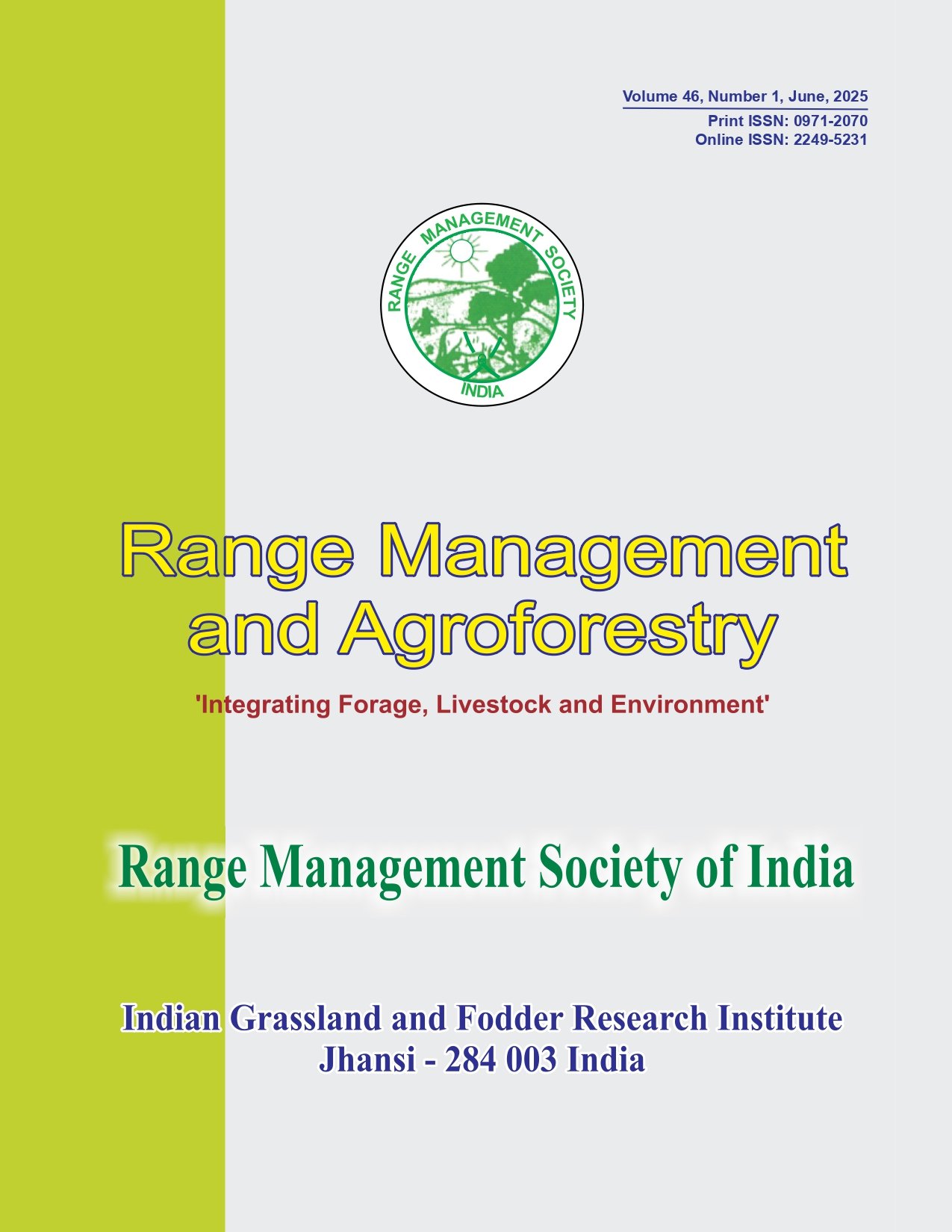Bajra napier hybrid: an effective host for mass multiplication of Arbuscular Mycorrhizal inoculum
Keywords:
Micronutrients, Molecular identification, Nutrient uptake, Root colonization, SubstratesAbstract
A study was conducted to choose a suitable host and substrate for Arbuscular Mycorrhizal (AM; Rhizophagus sp.) inoculum multiplication. Two plant species, maize (Zea mays L.), and bajra napier hybrid (BNH) were examined for mass multiplication of the AM fungus Rhizophagus sp. The impact of different substrates (perlite, vermicompost, coir pith, and FYM) @ 10% added to vermiculite medium on growth and multiplication of Rhizophagus sp. was also assessed. BNH grown in vermiculite along with vermicompost substrate had highest mycorrhizal spore number (135/ 50 g of the substrate) and root colonization (80%) compared to maize. With the mutual effect of mycorrhizae, uptake of Mn (23.0 mg/plant), Zn (14.74 mg/plant), and Cu (1.28 mg/plant) were also significantly more in BNH in combination with vermiculite and vermicompost. However, uptake of Fe (49.22 mg/plant) was higher in maize amended with vermiculite and vermicompost. Both the hosts (BNH and maize) amended with FYM showed a significant increase in the root length, shoot length and root biomass over other substrates. In correlation analysis, root colonization was positively correlated with root biomass, uptake of macronutrients (nitrogen, phosphorus), and micronutrients (manganese, copper, and zinc).




